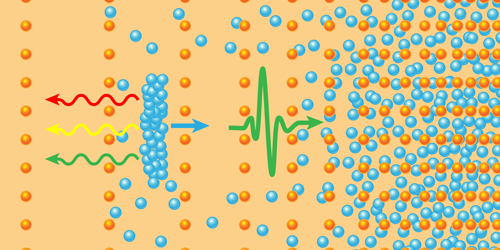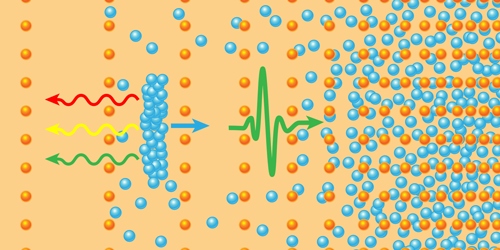Plasma Mirror Mimics Evaporating Black Hole
If black holes radiate, as Stephen Hawking predicted in the 1970s, then the information inside them isn’t as indestructible as quantum mechanics would have us believe. Resolving this “information loss paradox” has largely been a game for theorists. Testing their ideas might now be possible thanks to a proposal for making an analog black hole with intense lasers and plasma.
Hawking radiation occurs when quantum fluctuations near a black hole’s horizon create pairs of photons, with one escaping and the other staying trapped inside. One way to explore the information paradox is to look for correlations between the escaping photons and their abandoned partners as the radiating black hole vanishes. Obviously this isn’t possible with real black holes. But the idea has been explored in thought experiments that invoke Einstein’s equivalence principle to mimic the gravity that photons feel near a black hole’s horizon with an accelerating mirror. Here, a reflected photon is the Hawking radiation and its unreflected partner is the trapped photon, which is only released when the mirror stops moving.
Pisin Chen, from National Taiwan University in Taipei, and Gerard Mourou, from the École Polytechnique in Palaiseau, France, figured out how to turn the moving mirror experiment into a reality. In their proposal, an intense laser pulse travels through a nanofabricated plasma target. The pulse leaves a wake of excess electrons that acts as a moving reflective boundary for photons emerging from quantum fluctuations. They showed that for the plasma mirror to accelerate as required, the plasma density has to increase roughly every 100 nm. Using realistic laser intensities and plasma densities, they then confirmed that their setup fulfills the criteria of the moving mirror experiment.
This research is published in Physical Review Letters.
–Jessica Thomas
Jessica Thomas is the Editor of Physics.





